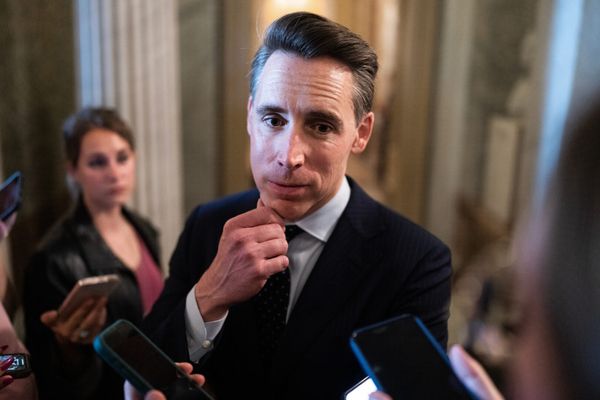
Another day, another executive order. This time, President Donald Trump released a missive on Tuesday evening outlining a new plan for the Elon Musk–helmed Department of Government efficiency (DOGE), aimed at aggressively cutting down the size of the federal workforce.
The executive order demands that the heads of federal agencies “promptly undertake preparations to initiate large-scale reductions in force,” a process also known as an RIF. Agencies can now hire only one employee for every four that leave. And each agency head is also now required to work with a DOGE Team employee to develop a “data-driven plan” for hiring.
“This order gives DOGE essentially a liaison or a person at every agency, the intent will be heavily involved in assessing and conducting these reductions in force,” says Mark Goldstein, a partner at law firm Reed Smith. “To me, it seems as though the DOGE team lead will be effectively running the RIF process.”
The move also specifically singles out temporary federal employees for cuts, as well as retired employees who have been rehired. It also focuses on cutting workers associated with diversity, equity, and inclusion initiatives; other federal initiatives that the Trump administration shuts down; and employees performing functions that are not considered “essential.” Federal workers with jobs related to “public safety, immigration enforcement, or law enforcement,” however, are exempt.
Here’s what you need to know about the latest executive order, and how it affects federal workers and the government.
How big a deal is this executive order compared to other recent federal-worker-related actions?
This is not the first presidential move, or even executive order, specifically targeting federal employees.
Over the past few weeks, Trump has shuttered all federal DEI departments with instructions to either terminate or reassign workers connected with those bureaus. He’s also sent a mass resignation offer to hundreds of thousands of federal workers via the Office of Management and Budget, which created fear and confusion, and has resulted in ongoing litigation.
DOGE has also effectively cut entire segments of the federal government, including USAID, and has vastly defunded others, including the U.S. Department of Education.
That said, if this executive order survives intact, it could paralyze some agencies that have “no fat left to trim from,” says Michelle Devitt, a partner at Willig, Williams & Davidson who served as an attorney for the National Labor Relations Board (NLRB) for more than a decade.
Joe Schmitt, a labor attorney for Nilan Johnson Lewis, agrees, saying that it may be very difficult for agencies to functionally operate without the necessary staff to get work done: “I sure hope that people realize that when the federal government is not responsive, and unable to provide them with a service, it's because the administration terminated so many federal employees.”
Is this legally viable?
Trump’s other executive orders have been challenged in court, and lawyers tell Fortune this one is no exception.
“I would not be surprised in the least if we see legal challenges to the specific cuts or restructuring that DOGE recommends,” says Devitt. She adds that neither the president or DOGE leaders have the freedom to close, restructure or eliminate agencies or sub-agencies without Congress.
“By calling for restructuring agencies with DOGE approval, but without Congressional approval, he is potentially violating his legal obligation to spend funds appropriated by Congress for the purposes set by Congress,” she says.
Another challenge could come from organized labor if unionized employees are cut, says Schmitt. It’s also possible that non-union employees may also band together and bring a class-action suit against the federal government.
“A reduction in force is a classic employer action that can beget a class or collective challenge,” says Schmitt. “It could be age, race, gender, or it could be, in this case, based upon due-process concerns or other issues that are unique to the federal termination context, as opposed to a private-sector termination.”
Schmitt adds, however, that a hallmark of this presidential administration is its willingness to go to court.
“They don't care about the lawsuits,” he says.
A private-sector playbook for the public sector
If the latest executive order is bewildering from a public-sector perspective, that’s because it comes from the private sector. These kinds of headcount reductions are coming in the private sector and sometimes even happen on a yearly basis, notes Goldstein. What’s uncommon is the administration’s use of RIFs across the public sector.
“We've seen with a lot of these early executive orders from the new Trump administration, [they] seem to be extending concepts from the private workplace to the federal,” says Goldstein.
Other major Trump mandates over the past few weeks, including the mass resignation offer that went out to the entire federal workforce, follow a similar approach, so much so that the OPM’s initial email was titled “Fork in the Road,” the same exact wording as an email that went out to Twitter employees after Elon Musk took over the company in 2022.
What are federal worker unions saying?
Organized labor has been on the frontline of RTO lawsuits over the past few weeks, and needless to say, federal worker unions are not happy with the latest executive order.
"Firing huge numbers of federal employees won't decrease the need for government services. It will just make those services harder or impossible to access for everyday Americans, veterans, and seniors who depend on them,” said Everett Kelly, president of the American Federation of Government Employees (AFGE).
Lee Saunders, the president of the American Federation of State, County and Municipal Employees, wrote similar feelings in a statement on Wednesday.
“We won’t stand for it," she wrote, "and we will keep fighting back."







